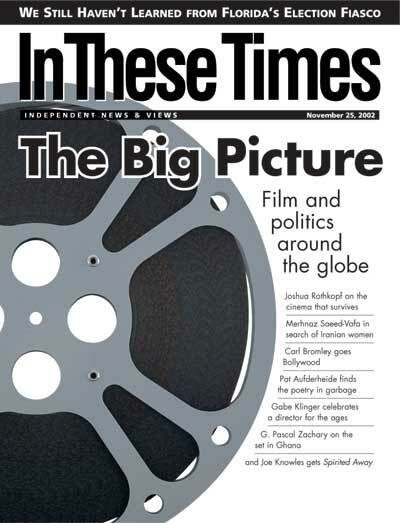Here in Fredericksburg, Virginia, amid the fear and anger over the sniper rampage, one topic has been largely overlooked: how to revise gun laws to aid criminal investigations and to prevent some gun crimes from ever occurring.
This is gun country. People here flock to gun shows, where rifles like the kind the sniper apparently used are for sale, no questions asked. Virginia’s Democratic governor, Mark Warner, eagerly courted gun owners in his campaign last year — and he has not disappointed them. While discussing the sniper attacks recently on a Sunday-morning TV talk show, the governor expressed support for maintaining the gun law status quo.
But not everyone agrees with him. One idea receiving considerable attention is a proposed national firearms “fingerprinting” system. The concept is straightforward: A bullet and its shell casing are scratched as they are propelled through a gun’s barrel, producing markings unique to that gun. A database could be created that would include images of test-firings from all new guns (the system would not include fingerprints of guns already in circulation).
Most experts think such a ballistics database would be valuable. “What a fabulous opportunity it would be to have a system that gave you the make, model and possibly the purchaser of a gun, just from a shell casing ejected at the crime scene,” the director of the firearms division of the California Department of Justice told the New York Times. “It would be just like a criminal leaving his license plate at the crime scene.”
The Bush administration, parroting the National Rifle Association, initially questioned the reliability of ballistics fingerprinting, then announced on October 16 that it “wants this issue explored.” The administration knows perfectly well, however, that the Bureau of Alcohol, Tobacco and Firearms already studied firearms fingerprinting and concluded that the technology helped solve violent gun crimes that “would not have been solved without it.” In fact, the ATF’s own partial ballistics database — a system that holds approximately 120,000 firearm fingerprint images on bullets and guns involved in criminal investigations — has helped crack cases across the country.
Nevertheless, the gun lobby still questions ballistics technology, which is used in 27 countries, including Germany, Sweden, Israel and Thailand. White House press secretary Ari Fleischer said a criminal could alter the marks on bullets by filing the gun barrel and that a weapon’s fingerprints change over time. But the ATF report says examples of gun-tampering are rare and gun marks are reliable evidence “in the overwhelming majority of cases.” The ATF’s former head of crime gun analysis told the Times, “We test-fired a gun 5,000 times, and the technology was able to match the first round with the last round.”
The NRA also has argued a gun fingerprinting system would fail because criminals often use stolen weapons. But law enforcement experts say criminals are more likely to buy their guns new from legal buyers who peddle weapons on the street. This would indicate the value of a system that allows authorities to trace a gun back to its original purchaser, since there are instances when that person could offer an important lead in a criminal investigation.
The Violence Policy Center’s Matthew Nosanchuk, who specialized in gun legislation in the Clinton Justice Department, insists “the discussion that we need to have is much broader than just ballistics.”
He’s right. One matter that should be debated is the so-called gun-show loophole, which allows many gun sales to occur without any background checks at all. These shows, which the Violence Policy Center calls “Tupperware parties for criminals,” offer an easy, untraceable way to buy guns — especially chilling considering the plethora of semi-automatic assault weapons and high-powered rifles typically available.
The looming expiration of the federal ban on sales of new semi-automatic assault weapons also requires attention (firearms of this kind produced before the 1994 law went into effect were “grandfathered” and can still be possessed or sold). The ban will “sunset” in September 2004 unless renewed. Even though nearly every law-enforcement organization in the country supports maintaining the ban, the NRA has already succeeded once in getting the House to vote to repeal it. Encouraged by that partial victory, the NRA this year has made opposition to extending the ban a criterion on its political-candidate questionnaire.
Finally, there is the gun industry’s grotesque romanticizing of snipers. The Violence Policy Center reported three years ago on a growing fascination with snipers in the United States, fueled by gun manufacturers who aggressively market military and police sniper rifles to civilians. The gun industry, the report said, was catering to a sniper subculture whose bloody motto is “One shot, one kill.”
The gun lobby and their apologists are trying to shout down attempts at re-examining gun laws, wailing that people raising the issue are simply exploiting the sniper rampage. But that argument, as Nosanchuk puts it, “is like saying after 9/11, we’re not going to talk about airport security.”
While everyone understands there may well be no law that could have prevented the sniper murders, recent events do offer an opportunity for a vigorous, rational debate on gun laws. We should hope that such a debate will not be dominated by paranoid fanatics and the elected officials who pander to them.





